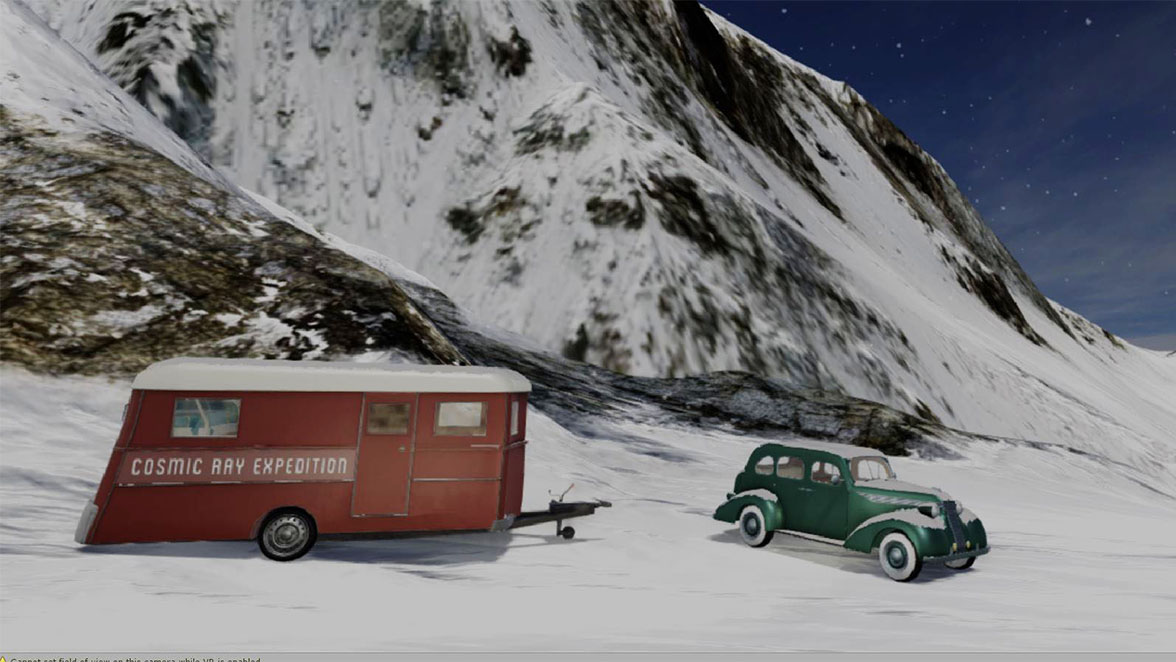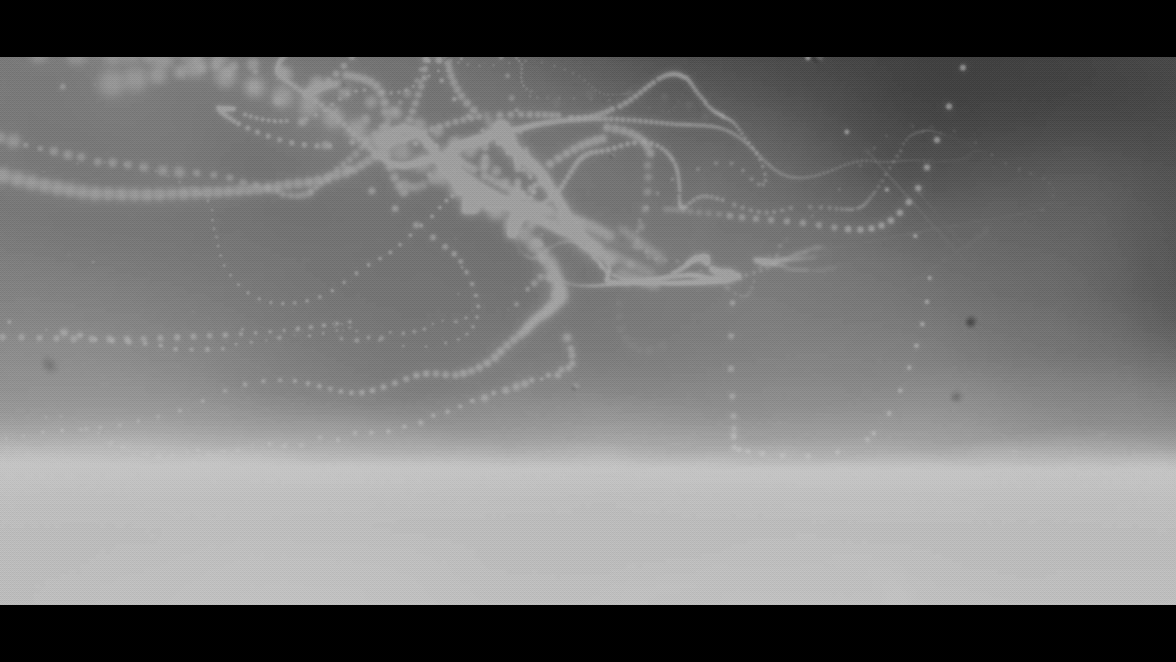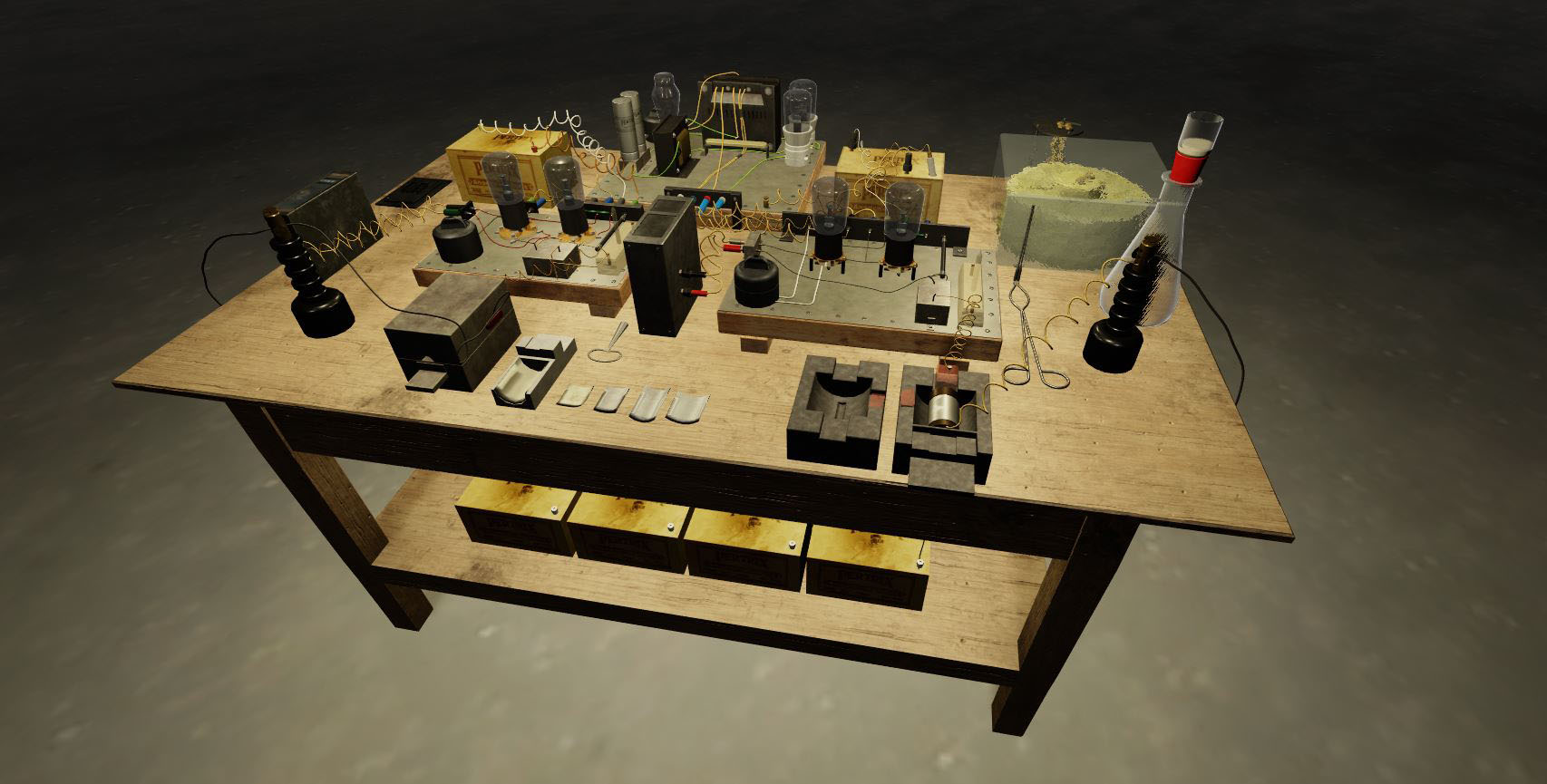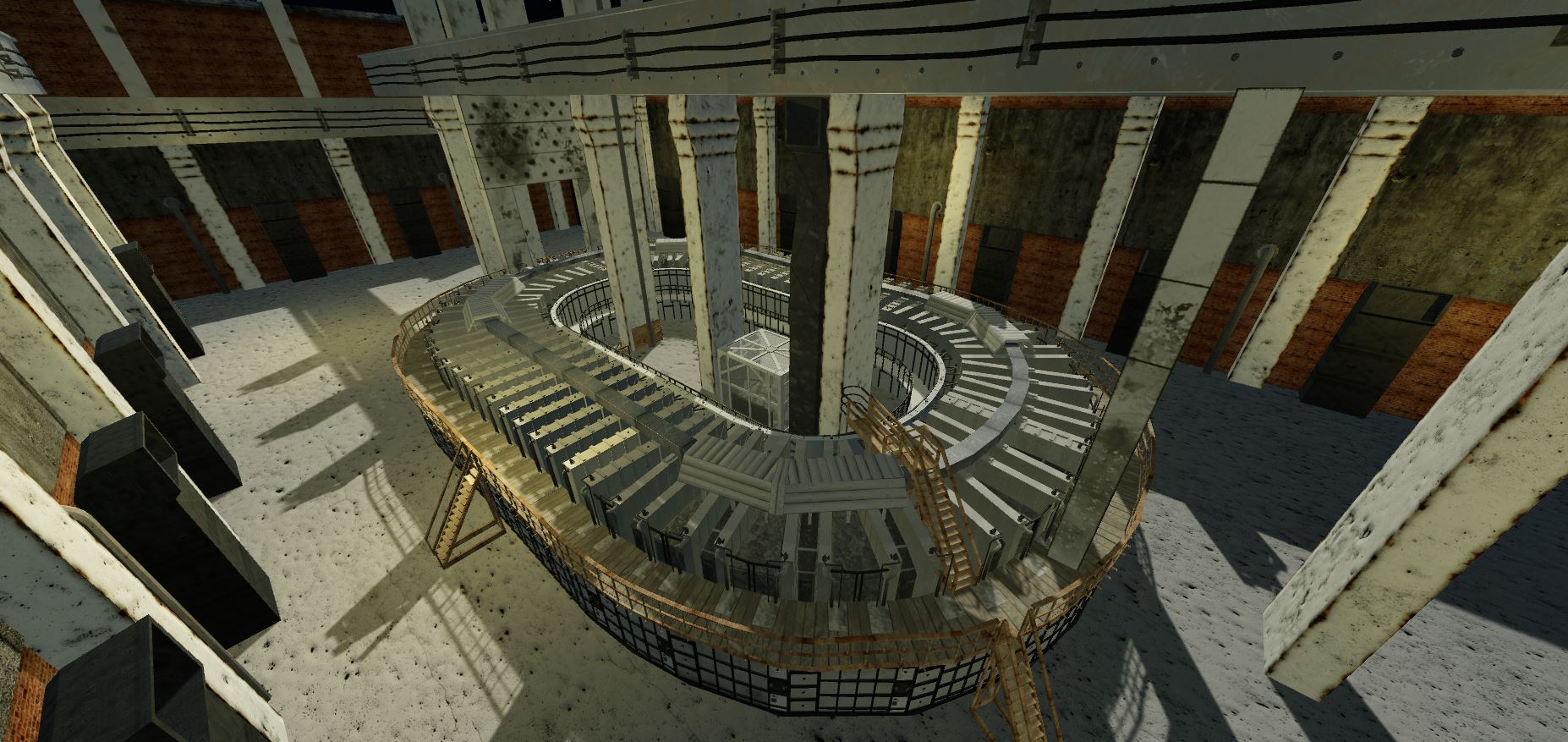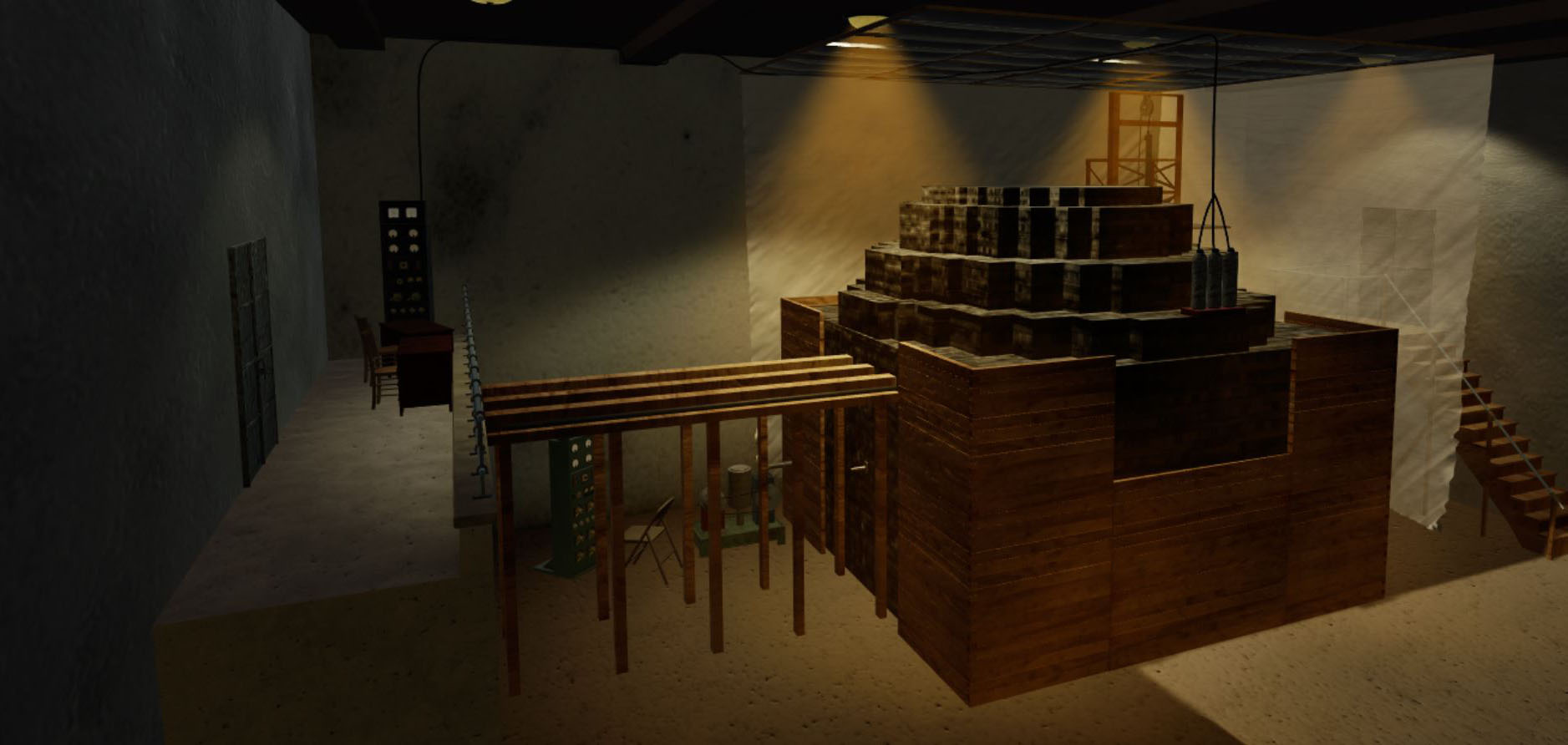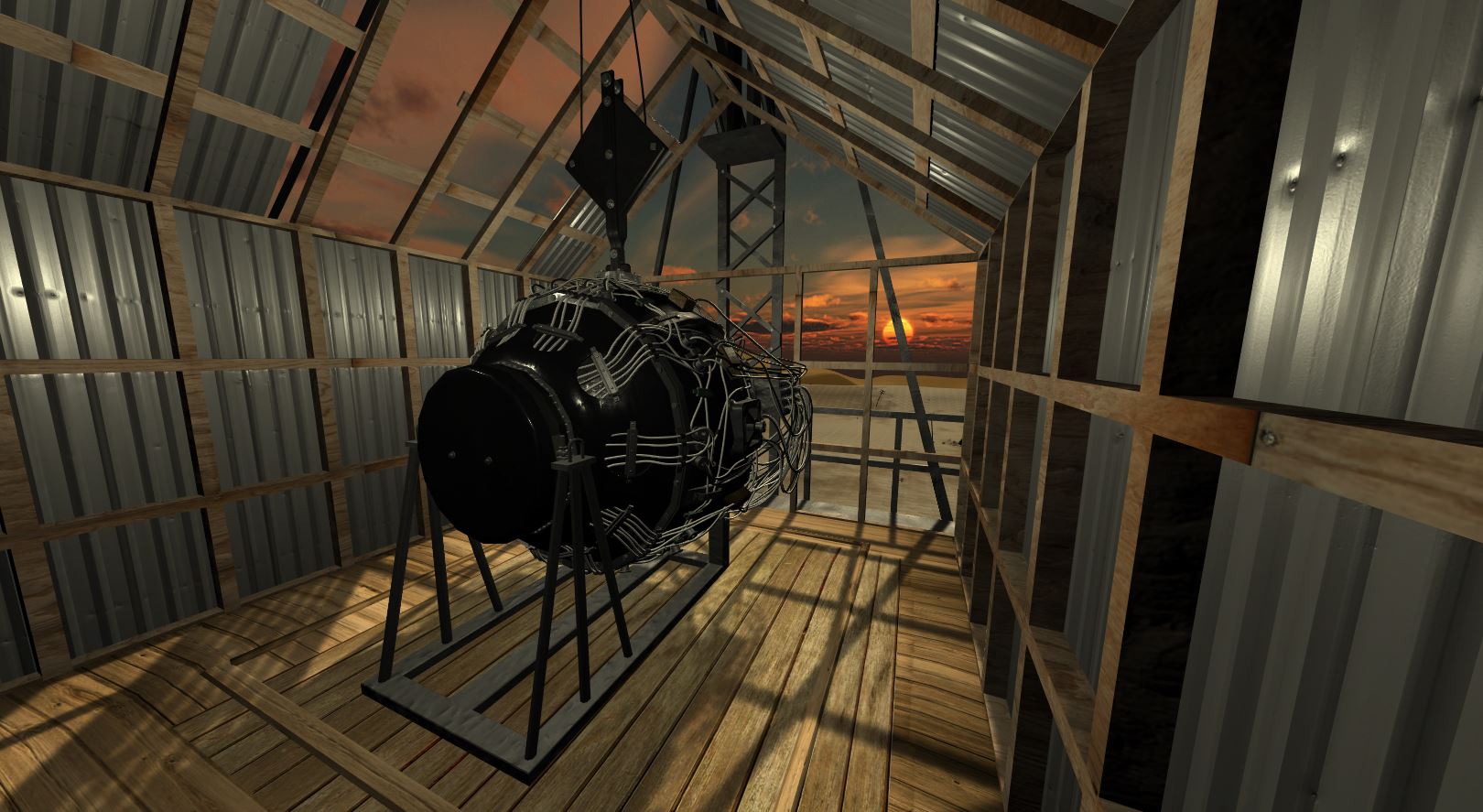M CURIE | GOLDEN TOAD | SCULPTING | SPINOOCHI | SMASHERS | THE RED FLUTE | SHOCKWAVES | THE ARK | GHOSTS OF CAMP X | NUMEROLOGY VR | XR LAB | TIMEWAVE | BRAVE NEW WORLD | KPE | VELOCITY LAB | THE IMPOSTOR | BLACKWATER | SIRE | GLOBAL THEATRE

Coming Soon in ’25: The Atom Smashers
The Atom Smashers is a memoir in virtual reality (Meta Quest). It is inspired by the legacy of grandfather Wilson Marcy Powell, a Harvard physicist who developed the magnets for the Calutrons in the Manhattan Project. He then became a tenured professor of Physics at UC Berkeley’s Radiation Lab under Ernest O. Lawrence.
In 1941, grandmother Powell wrote a memoir of Wilson’s summer Cosmic Ray Expedition. Dr. Powell had hauled a cloud chamber in a metal trailer to the top of Mount Evans, Colorado. He was looking for the elusive mesotron (meson) and was determined to photograph the subatomic particle. He was successful; the wily particle was caught and photographed in the gas. But as his trip was winding to a close, Wilson was visited by Dr. Brode, a professor at the University of California, Berkeley for a mission that had nothing to do with cosmic rays. Work on the Manhattan Project and the atom bomb had begun.
Image on right: The 184-inch Cyclotron (“atom smasher”) in the Radiation Lab at UC Berkeley in 1943. Built in Maya and textured in Substance Painter/Photoshop, the scene is rendered in Unity for an interactive VR experience.
STRUCTURE AND FLOW
[Interactivity] Users will be able to walk around the laboratories, experiments and machines that drove physics in the first half of the 20th century. Special objects will trigger historical movie clips, photos and other historical artifacts.
[Shifting World Scale] The scale of the virtual world can shift between the real-world view – the Newtonian world – and the nano view – the particle world – depending on the user’s interaction with the environment. For example, if the user clicks on a cloud chamber, she/he will transition to the inside of the cloud chamber and experience the heady and chaotic world of subatomic particles streaking through gas.
Scene 1: Postwar 1945: Wilson M. Powell in Berkeley, California. The format is framed. The journey is a flashback.
Scene 2: Lise Meitner, Otto Frisch, Otto Hahn – Discovery of Nuclear Fission, Dec. 1938
Scene 3: Cloud Chamber and Pursuit of Cosmic Rays – late 1930s, early 1940s
Scene 4: Ernest Lawrence and Cyclotrons (“Atom Smashers”) – 1930s to 1940s
Scene 5: World’s First Nuclear Reactor, Enrico Fermi and CP1
Scene 6: The Calutron – Cyclotron/Uranium Processor, Manhattan Project 1940s
Scene 7: Trinity, the First A-Bomb Test – July 16, 1945
Scene 8: Return to Berkeley in 1945.
SAMPLE SCENES
In the early 1900s, C.T.R. Wilson invented the cloud chamber, a device that detects charged particles (ions) as they streak through gas in a chamber and leave a trail of water droplets. Because different particles create distinctive tracks, this invention paved the way for the study of particle physics.
In the summer of 1941, grandfather won a Guggenheim fellowship to capture the elusive mesotron (meson). He plunked a mobile lab with a cloud chamber on Mount Evans. After taking 13,000 pictures, he finally caught the meson in the chamber. At summer end, grandfather then headed to UC Berkeley to work in the Manhattan Project.
In The Atom Smashers, users can enter the trailer on top of Mount Evans and teleport right into the cloud chamber. They’ll experience the particle world as if they are the gas surrounding the particles.
Animation: particle systems in Unity that capture the dynamic of a cloud chamber as viewed through the Meta Quest.
“Nuclear fission, the process by which an atom splits into lighter atoms, releasing considerable energy, has had a profound effect on our world in delivering energy, influencing geopolitics and opening new frontiers in science and medicine.
75 years ago three scientists Dr. Otto Hahn, Dr. Lise Meitner and Dr. Fritz Strassman working at the Kaiser Wilhelm Institute for Chemistry in Berlin developed an experiment grounded on the then-evolving concept that splitting an atom of an element would produce two atoms of smaller different elements.
Their historical experiment (photo on left: 3D experiment in VR) when compared to examples of today’s breakthrough experimental setups seem like nothing more than a high school demonstration, but at the time it represented cutting-edge research.” International Atomic Energy Agency (IAEA)
The Cyclotron was then transformed into the Calutron, or the uranium processing machine that used electromagnetic separation to generate U235 for the atom bomb. The Calutrons were built at Site X in Oak Ridge, Tennessee.
In this scene, the user can teleport around the giant machine as well as climb up the stairs and walk around the balconies. Interacting with a “hot” tank, the user can transit to a micro-scene of the control room filled with high school girls who operated the machines and made them “sing.”
In 1942, Enrico Fermi’s team at the Metallurgical Laboratory, University of Chicago, built the world’s first nuclear reactor. Known as CP-1 (Chicago Pile 1), the reactor consisted of 45,000 graphite blocks, six tons of uranium metal and 50 tons of uranium oxide. On December 2, Fermi achieved a self-sustaining chain reaction or the controlled release of nuclear energy.
In this scene, users can relive the original experiment.
By slowly pulling out the cadmium control rods in the same way George Weil did in 1942, users will witness the pile go critical.
The “Gadget” or the first atomic bomb was detonated at White Sands, New Mexico on July 16, 1945. The code name for the test was “Trinity.”
Users can climb the 100-foot Trinity Tower, and then stand next to the bomb in the same way that physicist Norman Ramsey did during the actual test in ’45. Poised at the tower’s apex, they can view the vast desert of Jornada del Muerto.

